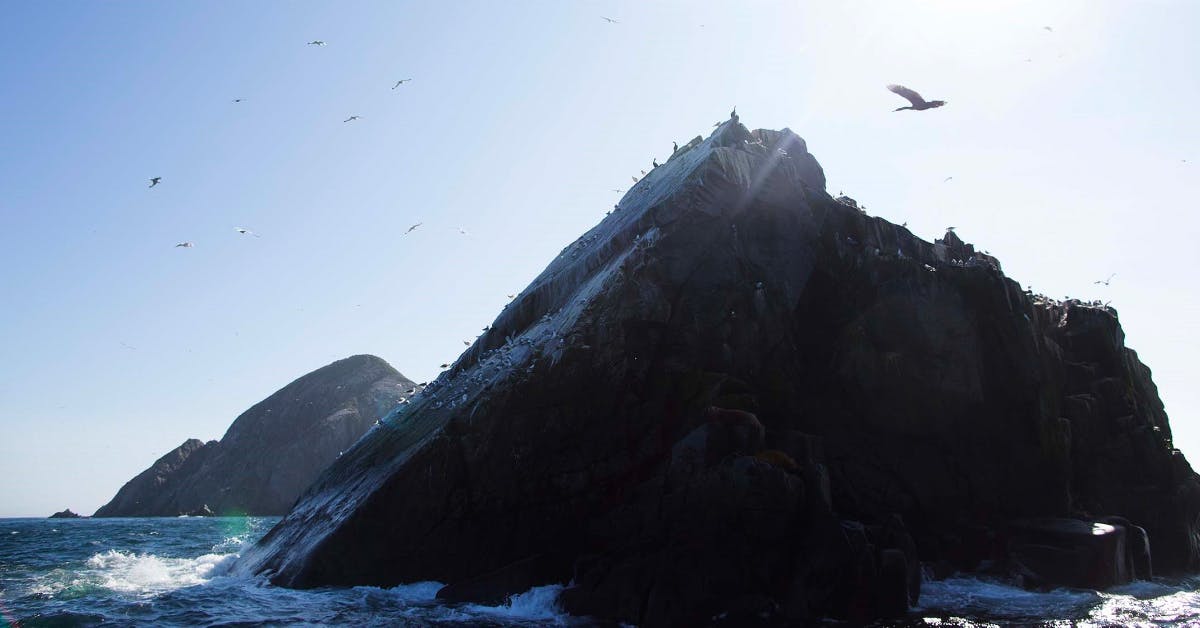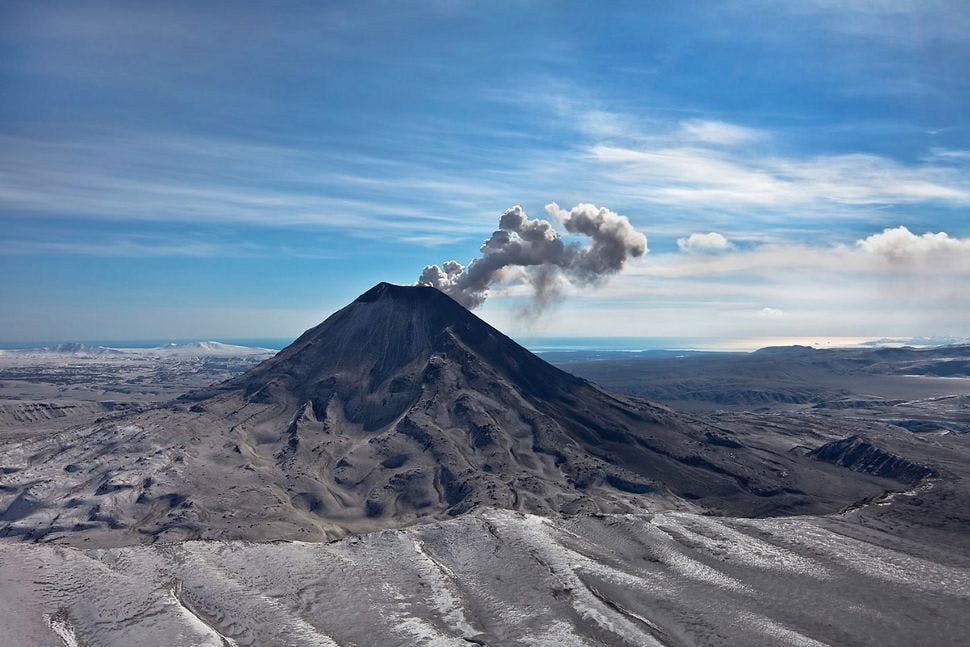Exceptional Wildlife Spotting on Russia’s Iony Island
The craggy, mist-shrouded cliffs of Russia’s Iony Island appear straight out of a J.R.R. Tolkien novel. For wildlife watchers, the barking Steller sea lions and squawking birdlife circling overhead are the main attractions to visit on this wildly remote destination in the Sea of Okhotsk.
From a distance, the island—which measures just one mile (1.6 kilometers) across and half a mile (850 meters) wide—looks like a gray pyramid topped with leafy green vegetation. Up close, it’s a haunting place of sheer cliffs and eerie spires that makes for a perfect habitat for migratory birds. Steller sea lions, and many other fascinating marine species, inhabit the waters beneath. Intrepid travelers who make it this far can experience the natural beauty and history of Iony Island. And in this part of Russia, wildlife photography is a richly rewarding hobby.

The Riveting History of Whaling and a Shipwreck
“Iony is a great place,” says Vladimir Burkanov, a scientist with the National Oceanic and Atmospheric Administration. “Every time I visit, I feel like I’m in a time machine that put me back to 18th century when the Sarychev-Billings expedition accidentally discovered the island in 1789.”
Once known as Saint Jonas’ Island, Russia’s Iony was also visited by whaling ships and their hardy crews in the late 1840s. Whalers from as far away as the U.S. and the U.K. hunted bowhead whales here. These massive creatures, some of the largest whales in the world, still swim in the waters of the Sea of Okhotsk—a marginal sea in Russia’s Far East, bordered by the Kamchatka Peninsula to the east and Japan’s Hokkaido to the south. Arriving in May or June, the whalers took advantage of fair weather, and would occasionally go ashore to collect birds’ eggs and hunt sea lions.
Tragedy struck in 1855 when the American vessel Edgar, carrying 1600 barrels of oil, wrecked on the rocky shores in dense fog. A fire consumed Edgar in the end, but, miraculously, neighboring ships managed to save all the crew aboard.

Observing the Steller Sea Lion
Like the whalers that came before them, visitors to Iony arrive in the late spring or summer for optimal weather. Storms and sea ice make this part of the Sea of Okhotsk an inhospitable place in winter.
The impressive, low-frequency roar of the Steller sea lion penetrates the thick fog that can envelop Iony Island. These magnificent, tawny-colored creatures were named for the naturalist Georg Wilhelm Steller, who first observed them in 1741. Among pinnipeds, it is only smaller in size to elephant seals and the walrus.
The Steller sea lion is a curious animal, and a few of them may swim out to your Zodiac for a closer look. Otherwise, they can be found on the rocky haulouts where they breed, fight, molt, rest and care for their pups. According to Burkanov, the island is now home to around 4,000 Steller sea lions.

Iony Island’s Remarkable Birdlife
During the summer months, when the daylight lasts well past midnight, the seabird rookeries are a cacophony of squawks, chirps and caws. Watching these birds soar overhead or protect their perch onshore is an ornithological wonder for travelers sailing the Sea of Okhotsk.
Birdwatchers will delight in the opportunity to spot Thick-billed Murres (also known as Brunnich’s Guillemots) in their thousands. The harsh, cackling calls of the murre echoes across the sea, offering a natural foghorn for boaters.
Perched on the cliffs, murres incubate their eggs on the bare rock. When they are ready to leave the land, the chicks leap toward the water, followed closely by a parent. You may spot them at sea too—males stay with the chick for eight weeks, providing food and protection.
A variety of auklets can also be spotted, including Whiskered, Least and Crested. Other birds include Horned and Tufted Puffins, Northern Fulmars, kittiwakes, cormorants and Fork-tailed Storm Petrel. At this rocky outpost of the Russian Far East, birding is indeed a rare and varied treat.
While reaching this distant island is no mean feat, spotting wildlife once here is a simple pleasure. As your Zodiac approaches the mighty cliffs of this island, put down your camera for a moment and just watch as the drama of sea lion life unfolds in front you and the sounds of nature fill your ears like a natural orchestra.




















